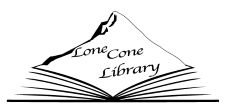The theory that would not die how Bayes' rule cracked the enigma code, hunted down Russian submarines, & emerged triumphant from two centuries of controversy
(Book)
Description
Also in this Series
Copies
| Location | Call Number | Status |
|---|---|---|
| Kent Denver Upper School - NONFICTION | 519.54 McG | On Shelf |
More Copies In Prospector
More Details
Notes
Reviews from GoodReads
Citations
McGrayne, S. B. (2011). The theory that would not die: how Bayes' rule cracked the enigma code, hunted down Russian submarines, & emerged triumphant from two centuries of controversy . Yale University Press.
Chicago / Turabian - Author Date Citation, 17th Edition (style guide)McGrayne, Sharon Bertsch. 2011. The Theory That Would Not Die: How Bayes' Rule Cracked the Enigma Code, Hunted Down Russian Submarines, & Emerged Triumphant From Two Centuries of Controversy. Yale University Press.
Chicago / Turabian - Humanities (Notes and Bibliography) Citation, 17th Edition (style guide)McGrayne, Sharon Bertsch. The Theory That Would Not Die: How Bayes' Rule Cracked the Enigma Code, Hunted Down Russian Submarines, & Emerged Triumphant From Two Centuries of Controversy Yale University Press, 2011.
MLA Citation, 9th Edition (style guide)McGrayne, Sharon Bertsch. The Theory That Would Not Die: How Bayes' Rule Cracked the Enigma Code, Hunted Down Russian Submarines, & Emerged Triumphant From Two Centuries of Controversy Yale University Press, 2011.

.png)